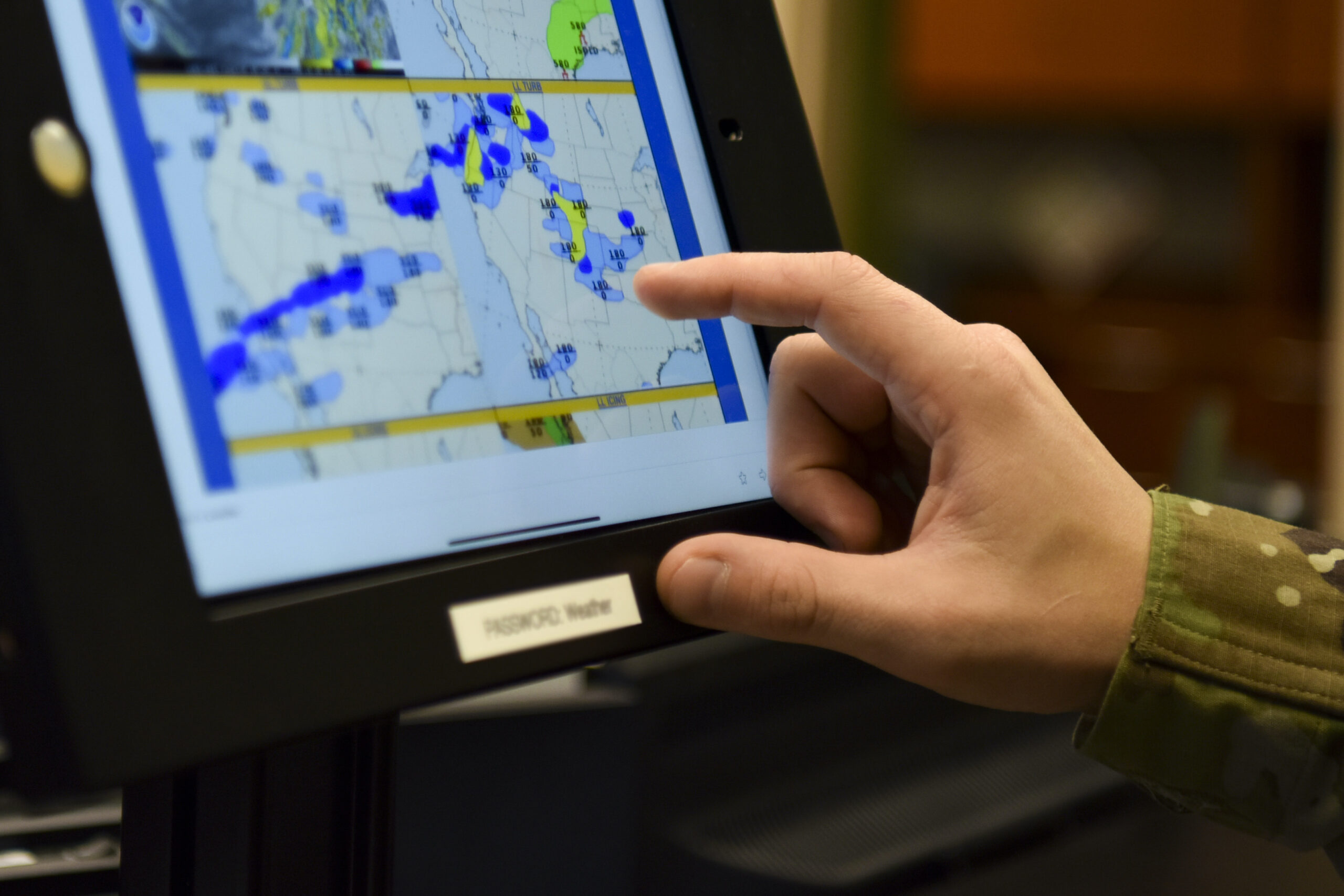Products You May Like
Congress for years has been critical of the U.S. Air Force’s weather satellite programs.
WASHINGTON — The Space Force has completed a report mandated by Congress on its plans to acquire weather satellites to fill a growing military demand for meteorological data, a senior official told SpaceNews.
The report is done and is being submitted to Congress by the Department of the Air Force, Charlotte Gerhart, chief of the Space and Missile Systems Center Production Corps Low Earth Orbit Division, said in a recent interview.
The defense appropriations committees for years have been critical of the U.S. Air Force’s space weather program, which is now the responsibility of the U.S. Space Force. In the 2020 conference report for the Defense Department, appropriators raised concerns about the Air Force’s “commitment to provide accurate and timely weather data, a mission with a profound impact on daily worldwide military operations.”
Appropriators directed the secretary of the Air Force to report back with details on the weather strategy. Gerhart said the Space Force’s weather acquisition plan “is in the process of being delivered from the Air Force to Congress.”
Gerhart said she could not comment on the content of the report to Congress. She noted that the Space Force has several programs in place to provide space-based meteorological and oceanographic data, and is investing in next-generation systems.
The Space Force earlier this month activated a geostationary weather satellite that was transferred to the Air Force by the National Oceanic and Atmospheric Administration (NOAA) in 2019. Formerly known as GOES-13, the satellite was renamed Electro-optical Infrared Weather System Geostationary (EWS-G1) and moved to the region over the Indian Ocean to fill a gap in coverage.
Gerhart said the satellite provides cloud characterization and theater weather imagery and has enough fuel to function another four to five years.
“We project that we can continue to operate that satellite until 2024, or possibly 2025,” she said. “This was a very unique opportunity to utilize a spare satellite, to relocate it to the Indian Ocean region to provide capability that we didn’t have previously. We also leverage the European satellites that are in the region but this allows us to have our own satellite to fill that critical need.”
It didn’t take long to repurpose NOAA’s satellite, whereas building and launching a new spacecraft would have taken five to 10 years, said Gerhart.
The EWS-G1 is a temporary fix until the Space Force acquires a new system that will likely be a distributed or proliferated low-Earth orbit constellation, said Gerhart.
SMC’s Space Enterprise consortium in June awarded contracts totaling $309 million to three companies for the Electro Optical/Infrared Weather System (EO/IR EWS) program.
Raytheon Technologies, General Atomics Electromagnetic Systems and Atmospheric & Space Technology Research Associates are developing competing space sensor prototypes that can provide global cloud characterization and theater weather imagery. One will be selected for an on-orbit demonstration by 2023. The plan is to deploy new satellites by 2025
The EWS-G1 is a geosynchronous satellite that doesn’t cover the poles. Polar coverage currently is provided by four 1960s-era Defense Meteorological Satellite Program (DMSP) satellites.
For polar coverage, SMC is acquiring a new Weather System Follow-On-Microwave (WSF-M) satellite, which is being built by Ball Aerospace.
Gerhart said the satellite passed a critical design review in April and is on track for a 2023 launch. The contract awarded in November 2018 to Ball Aerospace is for one satellite but there are options in the contract to get a second satellite.
The WSF-M will replace services provided today by the DMSP satellites for theater weather imagery, electrical optical infrared data. It also will add a sensor to measure the direction and speed of ocean winds, as well as the intensity of hurricanes.
Gerhart said SMC also is considering using weather data from private companies but that is assessed on a case-by-case basis. “It depends on what commercial sensors are available and what’s going to be the price point for that capability,” she said. “Are those sensors going to be accurate enough, are they going to actually meet our requirements?”
A congressional source told SpaceNews that appropriators will be closely watching the Space Force’s weather programs and remain skeptical. The source noted past failed efforts by the Air Force to acquire weather satellites and to host sensors on existing satellites.
Two previous programs to replace the DMSP were cancelled. One was the National Polar-orbiting Operational Environmental Satellite System (NPOESS)that began in 1997 and was cancelled in 2010 due to escalating costs and schedule delays. Another was the Defense Weather Satellite System that followed the NPOESS cancellation. It started in 2010 and was terminated in fiscal year 2012 because of unsustainable costs.
